Project Food Blog Challenge #3: Luxury Dinner Partyfeatured
Thanks to all of you rock star readers, we’ve now made it to Project Food Blog’s Challenge #3: throw a ridiculous foodie’s paradise dinner party. Well, we all know, this girl loves a good party 🙂
After pushing my culinary boundaries with homemade Cha Siu Bao, I was inspired to keep at my quest to master the art of Dim Sum. Literally translated, “dim sum” means “touch the heart”. Poetically translated, it means “heart’s delight.” So, for my third challenge, what better way to delight the hearts of my guests than to present them with a luxurious feast of mouthwatering, bite-sized morsels of varying textures, preparations, and succulent flavors.
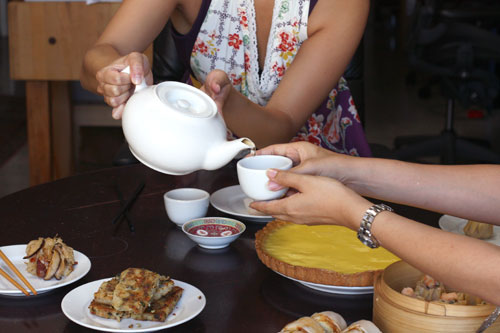
Yum Cha
Going to yum cha (this is what we call going out for tea and dim sum in Chinese) is one of my favorite pastimes, so coming up with my dream menu was easy. The key to a well-balanced dim sum meal is making sure you have a mix of flavors and textures. I wanted something steamed, something baked, and something fried. And definitely shrimp and pork would be two major ingredients. I decided to build a menu consisting of 8* of my favorite classic dim sum dishes:
* 8 is a lucky number in Chinese culture, and I figured I would need all the luck I could get if I was going to pull off this epic menu!
For some much-needed help (I’m an expert at eating dim sum, not making it), I turned to this vintage gem of a book that Hua found on one of his eBay cookbook binges: Dim Sum, by Rhoda Yee.

Dim Sum, by Rhoda Yee
Just one look at the cover and I was in love. How adorable is she? She looks like she could be one of my aunties. Auntie Rhoda, I trust you completely.
Inside the book was even better. It is filled with recipes for all the dim sum dishes I could ever dream of making, with funny anecdotes, helpful glossaries on cooking equipment and Chinese ingredients, instructional diagrams, suggested menu groupings, and best of all, these amazing old-school 1970’s era black & white photos.

Amazing
Without further ado, let’s get our dim sum on!
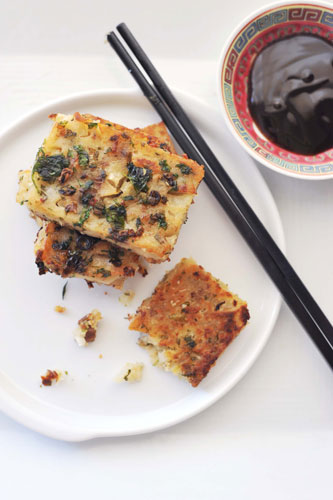
Pan-fried turnip cakes with served with oyster sauce
The first recipe that caught my eye was White Turnip Pudding Cake (Lo Bok Go). This is a dish that is near and dear to my heart. Crispy on the outside, creamy and smooth on the inside. The cake is made with Chinese white turnip, and studded with dried shrimp, barbecued pork, and bits of preserved turnip. Scallions and cilantro are also incorporated in the mix and scattered on top for extra fragrance.
The turnip (lo bok) itself tastes like a radish with a sharp, spicy bite to it. When it’s cooked, the flavor mellows out and it loses its spiciness, but retains a distinct savory flavor.
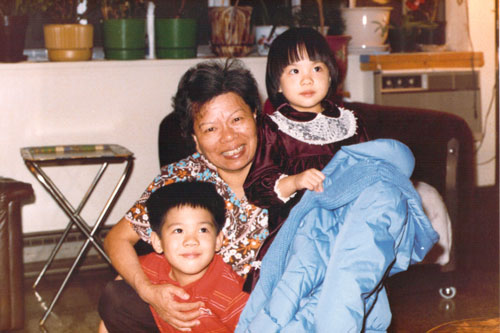
Paw Paw, big bro, and me
My grandmother used to make Lo Bok Go on special occasions, and it was always such a treat! Better than any that we would get in a restaurant – not sure what her secret was. My mom has her recipe written down somewhere at home, but in the meantime, I decided to give Yee’s version a shot.
It was surprisingly easy to make, and while it wasn’t quite as good as my grandma’s (not as smooth and light) the flavors were right on.
You can eat the pudding cake right out of the steamer, but I prefer letting it cool and pan frying it – extra crispy, please.

2. Shrimp Bonnets (Ha Gow)

Shrimp Bonnets (Ha Gow)
I am the most proud of the Ha Gow we made. The dough was a bit scary to make since the recipe kept stressing how important it was to quickly add precise measurements of boiling water to the starches – we ended up going with our gut and added more water than was called for since it seemed like the dough was too dry to come together. Our instincts were rewarded, and we ended up with a supple, translucent wrapping.
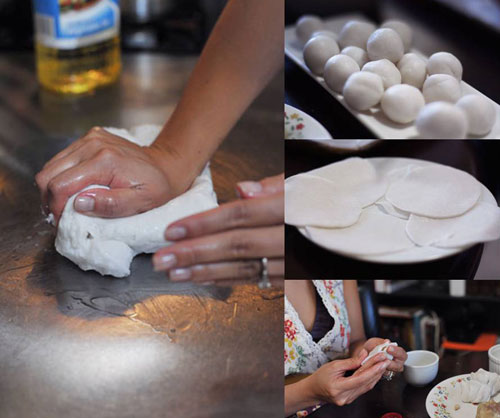
Kneading, rolling, pressing, wrapping
According to Yee’s 80-year-old aunt, Ha Gow came about as an accident by a drunken chef. The story is that one of the chefs in the royal household of China came to work totally sauced. He proceeded to make what was called shrimp dumplings, but instead of using rice flour, he made the fortuitous mistake of making the dough with wheat starch instead. When the dumplings were steamed, the wrapper became transparent and the pretty pink color of the shrimp showed through. So there you have it, even in imperial China, booze – the inspiration to some of the most ingenious culinary discoveries.

3. Steamed Meat Dumplings (Siu Mai)
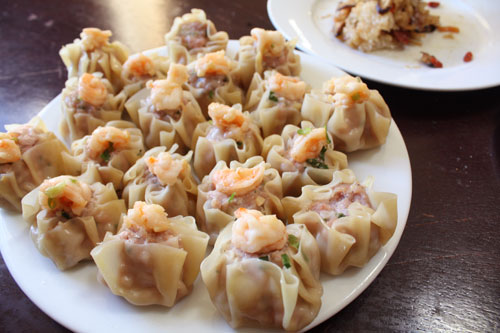
Steamed pork & shrimp dumplings
Another dim sum standard, Siu Mai, is a cylindrical-shaped pork dumpling that is typically topped with fish or shrimp roe and steamed. These bite-sized babies are easy to make, and make great party hors d’oeuvres.
The filling is made with fresh ground pork and pork sausage – I used uncased Italian sausage in this recipe and thought it worked out great. Don’t be intimidated by the laundry list of ingredients in the filling. The hard part is finding them, once you’ve got them you just toss it all in a bowl and mix 🙂 Most of the ingredients can be picked up at your local Asian grocer – the water chestnuts came in a can, and the salted/preserved turnips I found came in a vacuum sealed plastic bag.

Making Siu Mai
The most important thing when making fillings (or even burgers for that matter) is taste-testing to make sure your seasonings are right. All you have to do is steam up a little spoonful of the mixture. That way, you’ll make sure the filling tastes just as you want it to – no surprises.
I loved how light and fluffy the filling was. It must be the ½ cup of cornstarch in the mixture that does this. I didn’t have any roe on hand to garnish the Siu Mai, but Hua suggested using some of the leftover shrimp we had from the Ha Gow. Great call. The little splash of color on top was just what our dumplings needed.
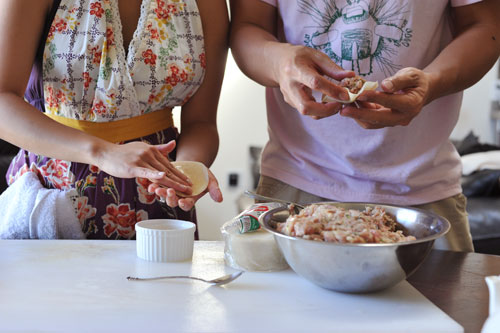
4. Shrimp Toast (Ha Toe See)

Toast points of shrimp & water chestnut
You can’t have dim sum without some crispity fried goodness. One of my favorite caloric splurges: Shrimp Toast. You start by making a paste of shrimp and water chestnuts, spread it on slices of stale sandwich bread, and then deep-fry it to a sinful golden crisp.
Be careful, these little bombs of decadence are positively addicting. Be sure to drink lots of tea after indulging in these to cut the grease. For our Dim Sum Party, we served up a pot of oolong tea called Teh Kuan Yin to cleanse our palates and help us digest.
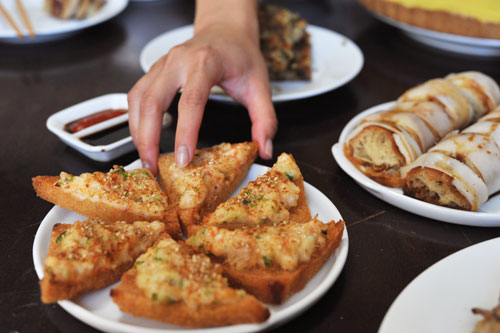
5. Deep-Fried Devil Rolls (Ja Leung)
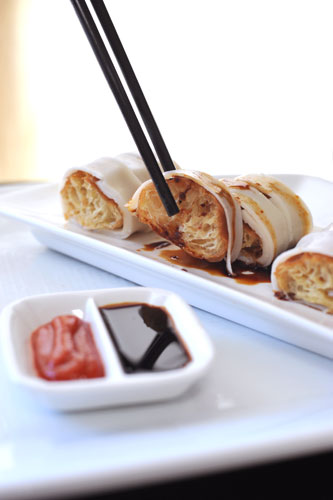
Ja Leung
Not all dim sum places serve Ja Leung, so when I find it, I always order a plate. It is essentially a fried breadstick that is wrapped in a rice noodle roll. That’s right. Carb-on-carb action. And oh so good.
You can always tell a good dim sum chef by how delicate the wrapping is on a dumpling, or how thin and slippery smooth a rice noodle roll is. I have never dreamed of making my own rice noodles before, but after a flip through my trusty Dim Sum Bible, it appeared as though it was about time I gave it a shot.
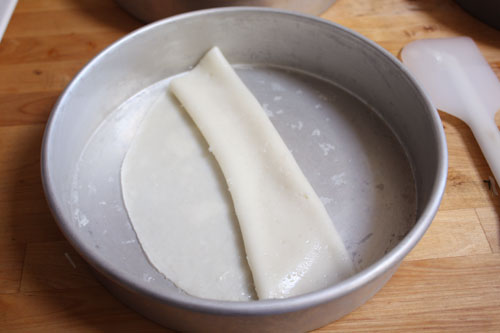
Rice Noodle Roll
It actually wasn’t so hard. The process is basically: 1) Make a batter; 2) Ladle batter into a cake pan; 3) Steam. The tricky part, though, was in getting the layer of noodle thin and even, but still sturdy enough to remove from the cake pan without tearing. I guess that’s why they pay the pros the big bucks.
There are a few criteria for what makes a well-executed Ja Leung. Let’s start with the breadsticks. These special breadsticks, called Deep Fried Devils (Yao Ja Guai) are typically served with congee. They come in two sticks, attached together, and are light as can be, with lots of air pockets inside. Then, the Rice Noodle Roll. You guessed, it. It should be as thin as can be and slippery smooth.
Most important of all, this is a dish that needs to be prepared and then eaten right away because the joy of it is the contrast between the fresh, hot, crispy breadstick on the inside, and the silky coating of rice noodle on the outside. Serve with sweet soy sauce and watch these devils disappear.
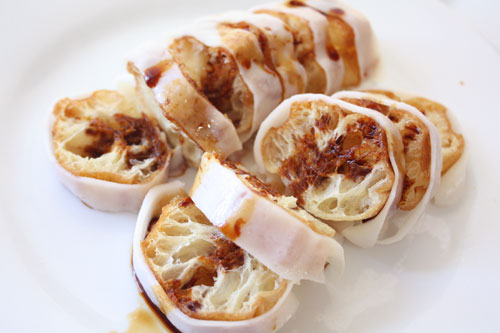
6. Sticky Rice Bowl (Naw Mai Fan)
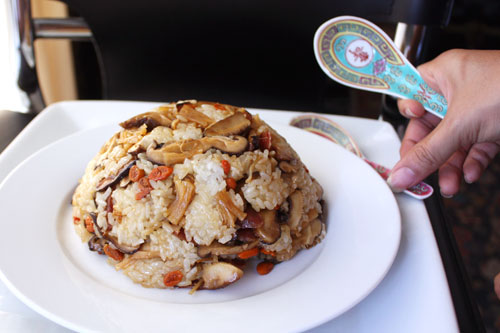
Sticky Rice Bowl
This is my idea of Chinese comfort food. Naw Mai Fan is a dish of sweet sticky rice and a number of dried Chinese ingredients – shitake mushrooms, goji berries, dried scallops – that have been rehydrated and stir-fried fragrant.

Ingredients for Naw Mai Fan
This rice dish is often served at dim sum – because a Chinese meal isn’t a meal without some rice. Speaking of rice, I like using a Sho-Chiku-Bai Premium Sweet Rice by Koda Farms. It cooks up nice and soft with a wonderfully chewy texture. The other secret ingredient here is Maggi Seasoning. It is a kind of distinctly flavored soy sauce…we always had a bottle of this in the pantry growing up, it’s like the ketchup of the Chinese household.
I love all the different flavors and textures in this Sticky Rice Bowl. The mushrooms add an earthy meatiness to the dish, the scallops bring in some savory saltiness, the goji berries a touch of sweetness, and the rice is just so satisfying.
7. Barbecued Pork Buns (Cha Siu Bao)
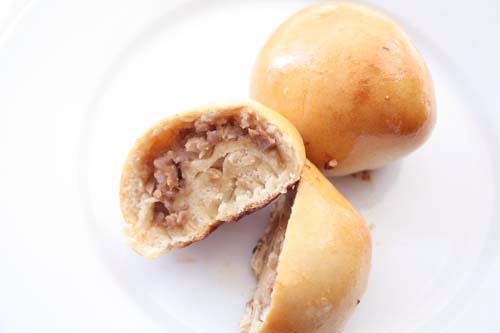
Baked Cha Siu Bao
I resuscitated a batch of Cha Siu Bao from last week’s challenge, and they weren’t too shabby. The outside glaze got even more golden brown and glossy after I defrosted and reheated them in the oven. Still best eaten fresh out of the oven before they’ve had a chance to cool down too much.
8. King-Sized Egg Custard Tart (Dai Don Tot)
And now, ladies and gentlemen, are you ready for our crowning glory? I present to you, an Egg Custard Tart fit for a king – a Dai Don Tot of epic proportions.

Golden, creamy, velvety smooth egg custard, nestled in a buttery crust, the ubiquitous Don Tot completes any dim sum meal. But have you ever seen one this big? 🙂
I didn’t have any small tart shell molds, so I decided to think big on this one and went for one giant Don Tot. The custard turned out just right – sweet, creamy, and a beautiful yellow color, like a big egg yolk. I made sure my eggs were at room temperature so that they would firm up gradually and evenly in the oven.
The crust was more shortbread-y than flakey. I think next time, I’ll go with more of a traditional pie crust and see how that turns out. The original recipe did call for ¼ cup of butter and ¼ cup lard…I substituted the lard for more butter so I wonder if that made the difference in density. Has anyone out there ever baked with lard? I’d love to hear if there is a big difference in flavor and texture.
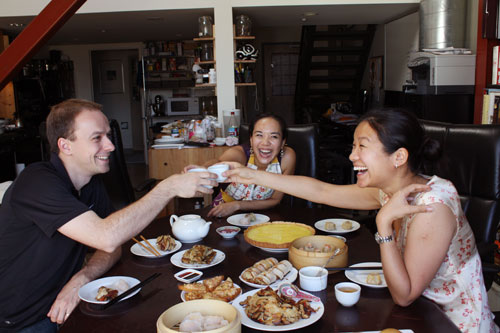
I hope you enjoyed this feast as much as I did! It was humbling trying to make all of these dishes for the first time, but I’m so glad I did it. I’m proud to be able to pay homage to something that is such an integral part of my Chinese culinary heritage. Those ancestors of mine, they sure knew a thing or two about good eats, huh?
Special thanks to our special guests who rolled up their sleeves and let me put them to work! And thank you for having such hearty appetites 🙂
(Voting for Round #3 is Open Mon 10/4, 6 AM PST – Thurs 10/7, 6 PM PST)

Dim Sum Yum Yum
RECIPES from Rhoda Yee’s Dim Sum:
White Turnip Pudding Cake (Lo Bok Go)
Shrimp Bonnets (Ha Gow)
Steamed Meat Dumplings (Siu Mai)
Shrimp Toast (Ha Toe See)
Deep-Fried Devil Rolls (Ja Leung)
Sticky Rice Bowl (Naw Mai Fan)
Barbecued Pork Buns (Cha Siu Bao)
King-Sized Custard Tart (Dai Don Tot)


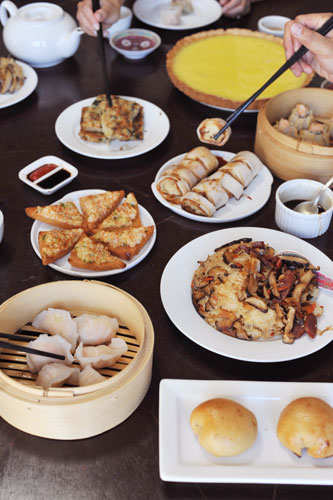

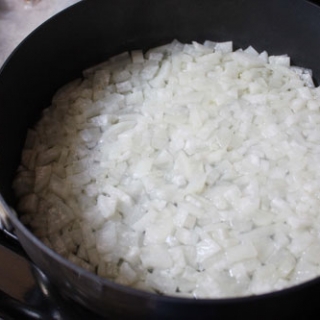
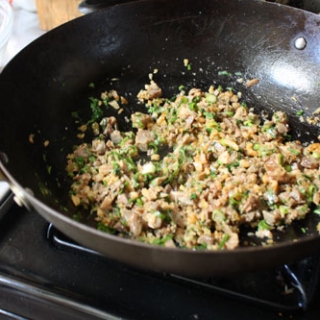
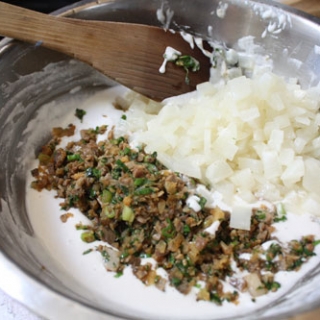
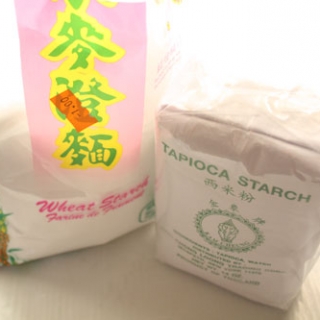
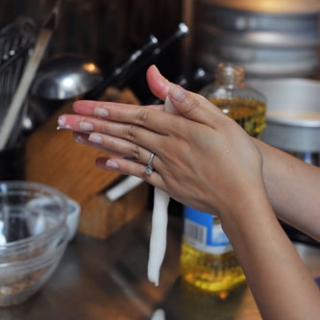

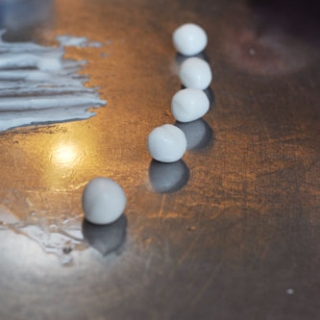

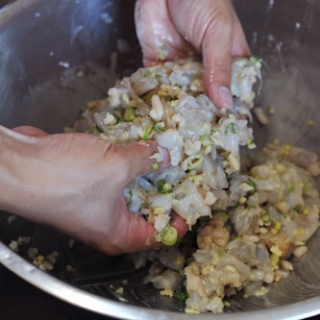
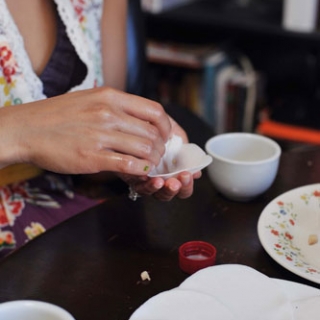

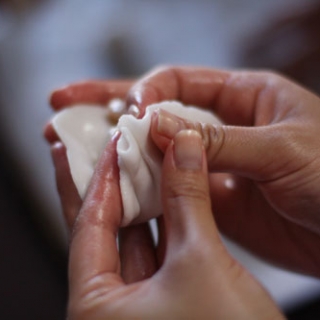
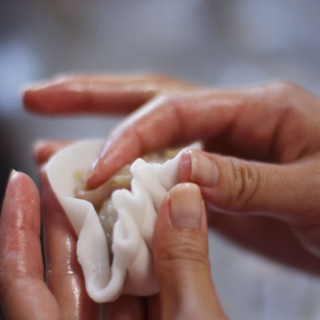
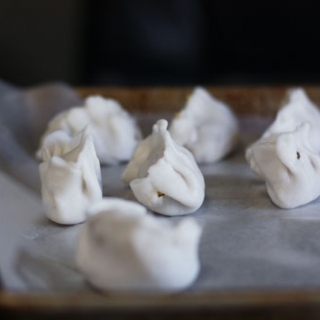
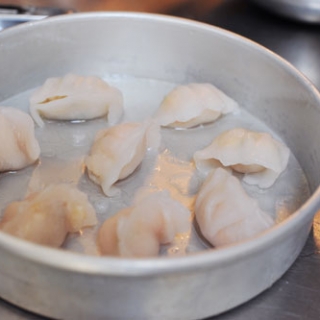
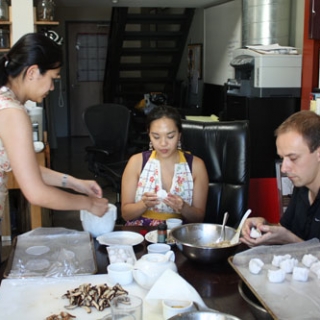
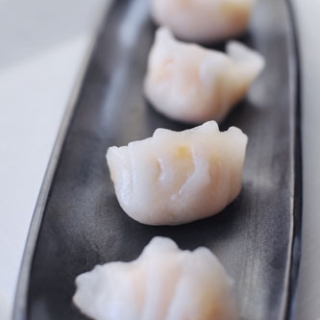
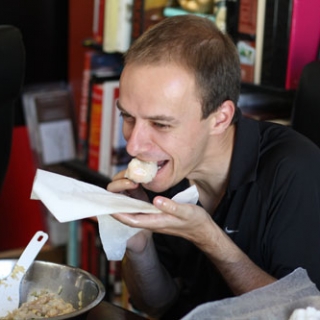

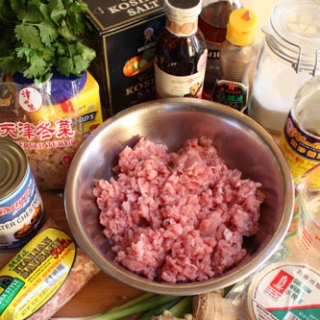
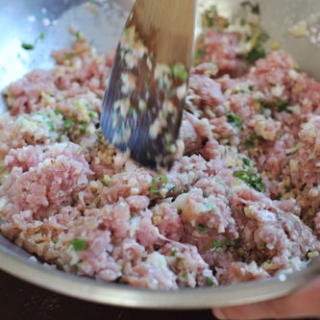
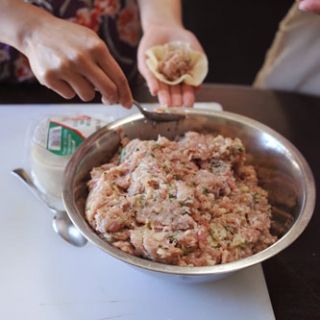

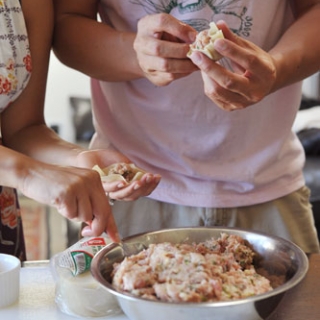
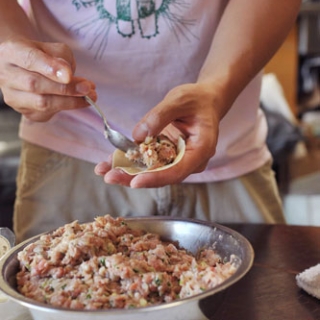
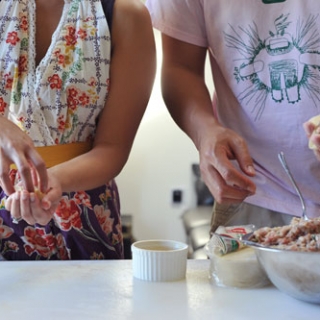
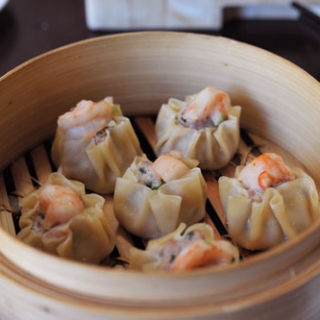

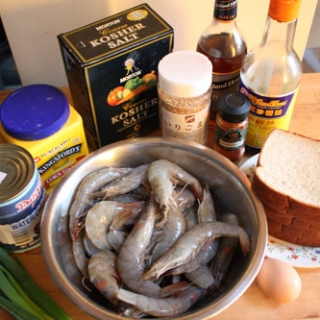
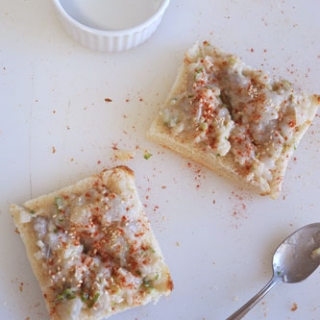
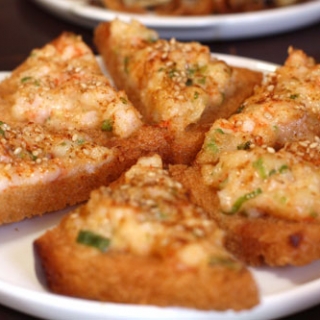
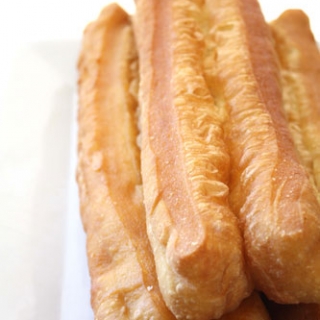
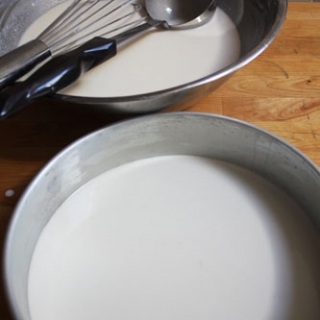
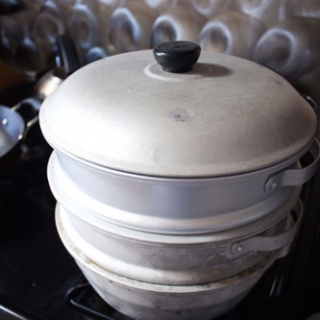


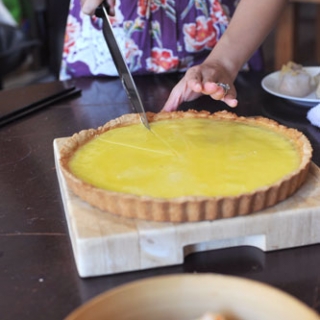
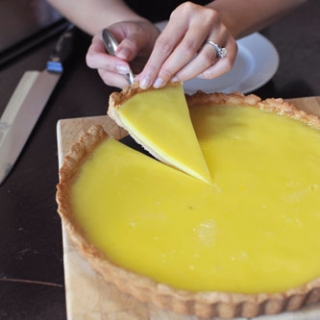
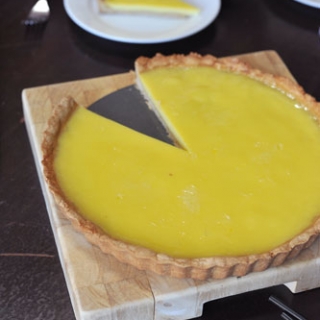
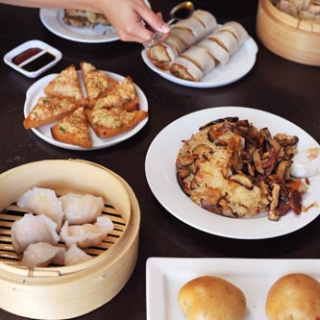
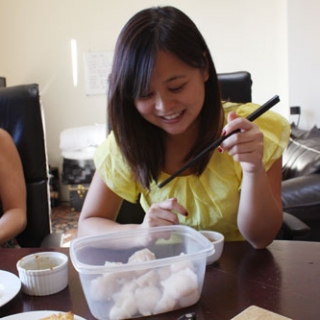
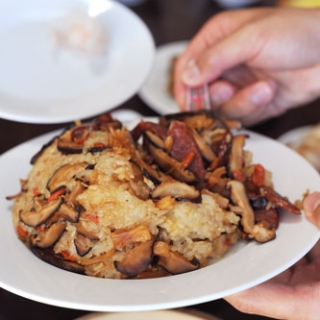
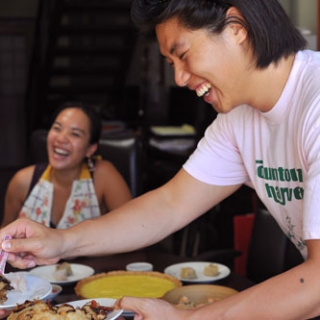
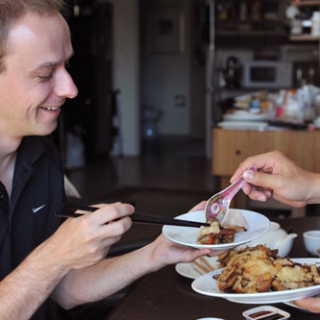
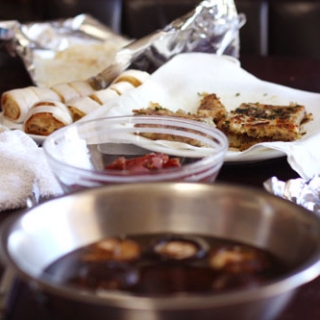
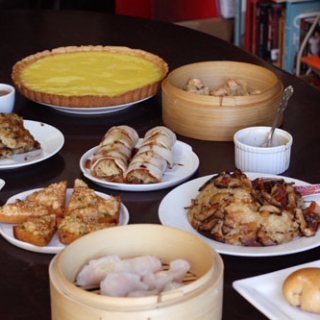
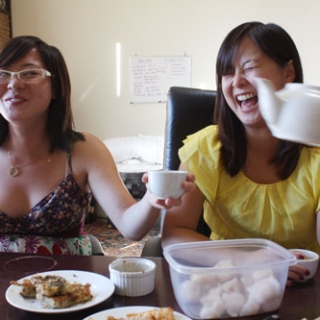



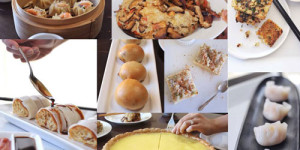

Add comment